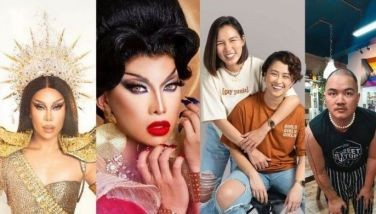Not really me?
Me Too is a phenomenon that rippled worldwide, with women who started speaking out about sexual abuse. Men were abusing women even in developed countries, and women, despite the advances made by their society in general, were too afraid to speak. There were too many consequences and repercussions for voicing out against the abuse, and so they kept quiet.
But gradually, activists and women of color began to sound their frustrations out, and when famous actresses in Hollywood started sharing their experiences on the casting couch, it was out of the cage and into the light. Alyssa Milano, Brooke Shields, and Salma Hayek were just a few. Men in power were abusing women who weren’t, and it was time to put a stop to it.
South Korea experienced its own wave, with women stepping forward to narrate their abuse at the hands of politicians, poets, movie directors, and presidential candidates. Then it became a discussion of salary gaps, absence in the board room, and discriminatory practices.
What’s next for the Me Too movement then? Who else is stepping forward? More importantly, have we been able to change society for the better? Unlocked achievements for women? Broken more glass ceilings?
In France, feminists thought they had the ideal protest act: they entered a museum, the Centre Pompidou-Metz, and spray-painted an 1866 painting with the Me Too slogan. The painting in question was “L’Origine du Monde” (or, The Origin of the World) - a very tight close-up of a woman’s private parts, with one nipple peeking out, created by Gustave Coubert (Google it, and see for yourself the stunning work).
What was their message? Artist Deborah de Robertis came forward and announced that her intention was to “call on all women, with or without vulvas, all intersex, trans and non-binary people, and all underrepresented people, whether artists, assistants or interns in the art world, to dare express yourself”.
I was confused by the announcement. I thought it was meant to represent all womyn, and then the description suddenly funneled down to only those working in the art world. Which isn’t a very big demographic, but perhaps, abuse is rife in the art world over in France, so who are we to judge.
But the debate started. Both in terms of the act as a potent symbol, as well as an effective representation of the movement itself. In its isolated self, it’s been branded vandalism, in the same vein as the other Just Stop Oil eco-terrorist attacks against famous paintings. The mayor of Paris says it is a criminal act --and arrests have been made.
But what about in the feminist stage? What is its value? Guardian columnist Dale Bernini Sawa wholeheartedly agrees that it is basic feminism, arguing that the painting reduces women to just her sexual parts. When artist Coubert cut off the model’s head, and painted only her private parts, he dispensed with her identity.
On the other hand, Hyperallergic writer Billie Walker argues that the French feminists were too literal. There is arousal within the painting itself --the model’s parts were “flushed with pleasure”. It was meant to be reverent, since it showcased the woman’s own pleasure. And who is to say that the model herself did not make her own decision to model her parts? Not these activists. “...it matters not that women’s pleasure is at the heart of the frame, only who placed it there, denying women their own agency.”
I guess she means, how can the activists claim that the model in the painting should scream “Me Too”, when maybe she wasn’t abused, and did it for her own reasons?
At the very least, here we are, back to discussing Me Too. And if we need to keep discussing it so that abuse disappears, well and good. But perhaps, appropriating other people’s art, and denying the rest of the public the ability to appreciate that artwork by covering it with graffiti, shouldn’t be part of it?
I could be harsher and scold the activists, telling them to make their own art rather than riding on someone else’s. For context, Deborah de Robertis reportedly staged a previous performance piece where she sat underneath the same painting in 2014, and exhibited her own private parts until the police came. But for further context, Ms. De Robertis has also accused a curator at the museum of abusing her when she was at the tender age of 26.
As my friend Mino likes to say, “ayayay”.
- Latest























